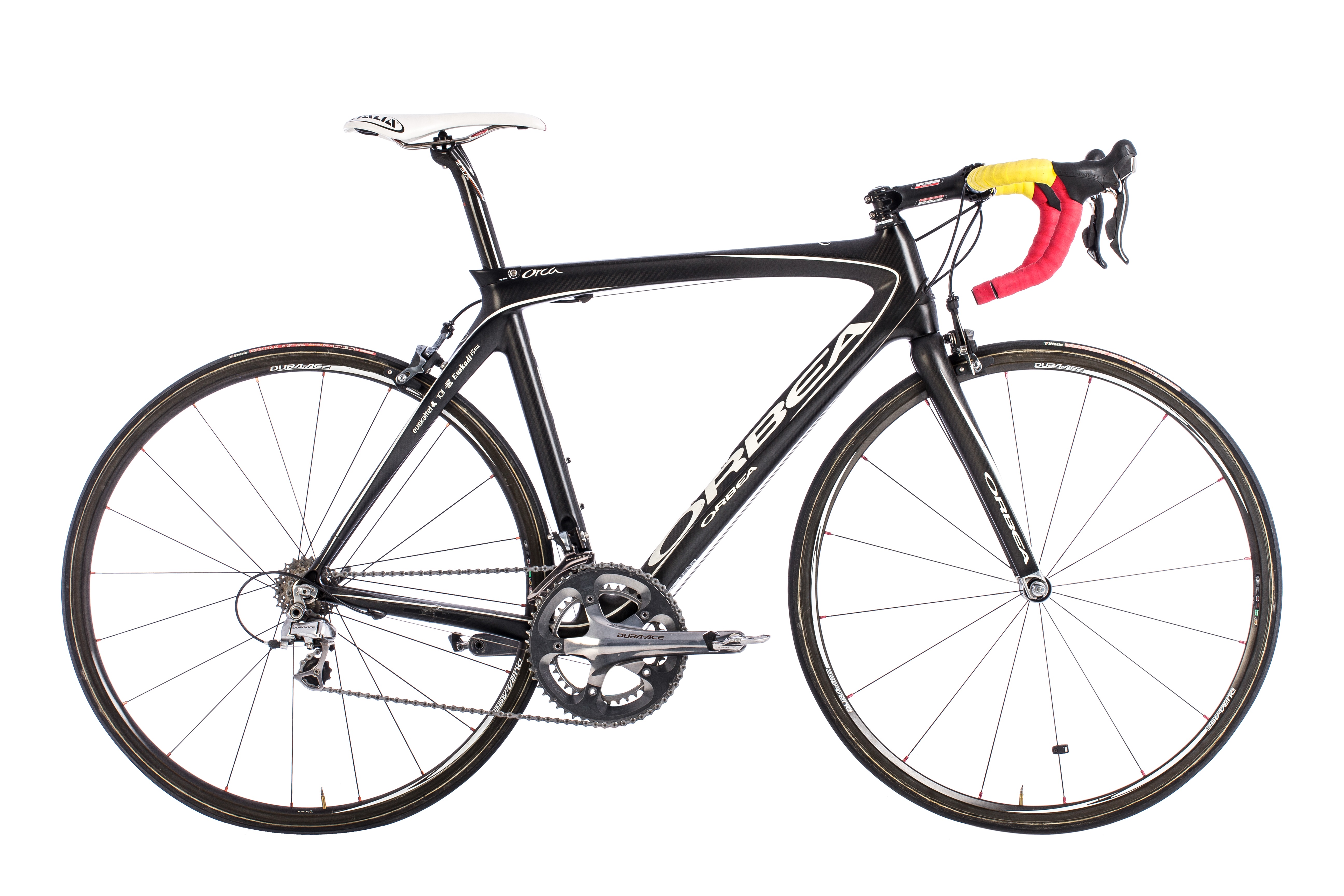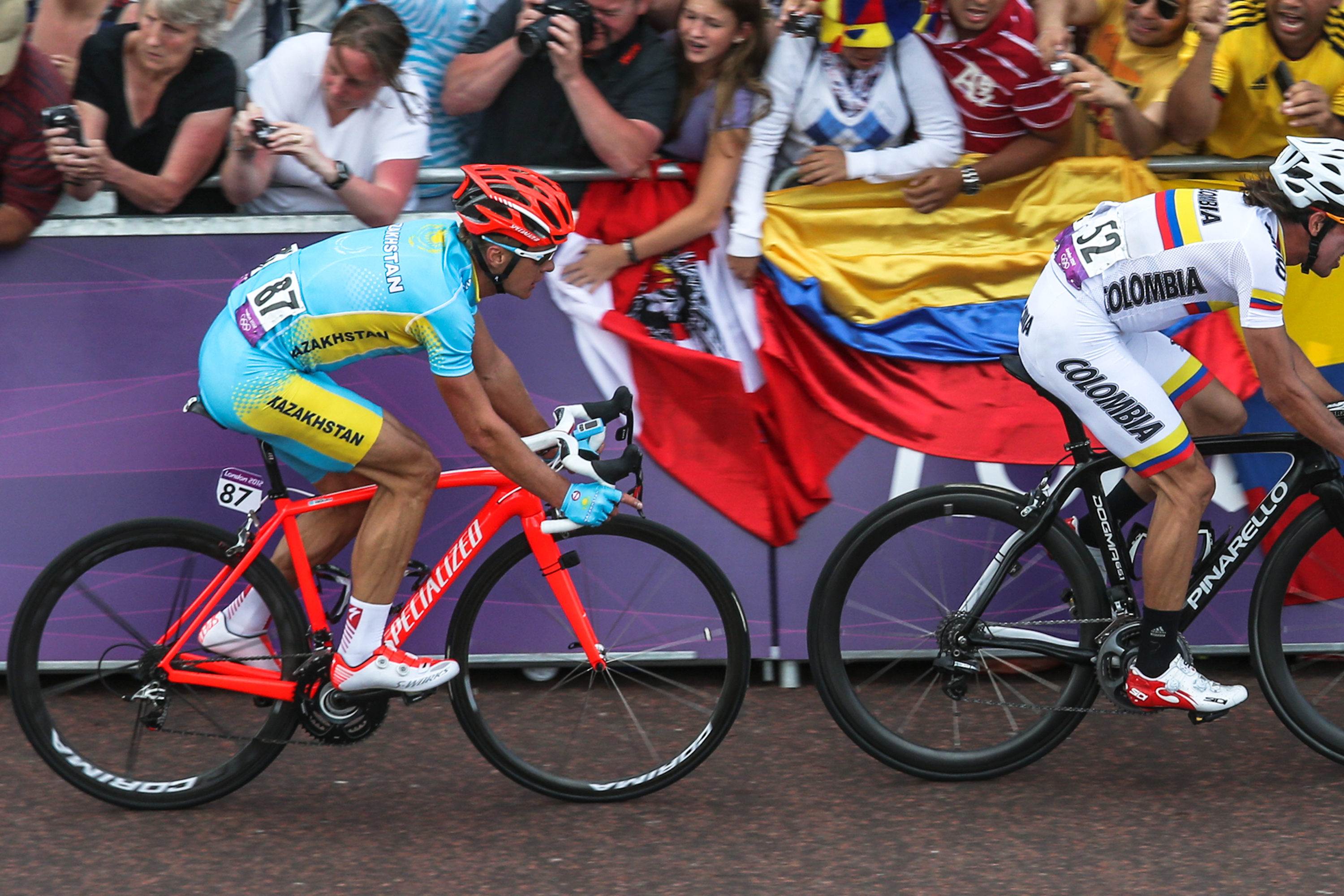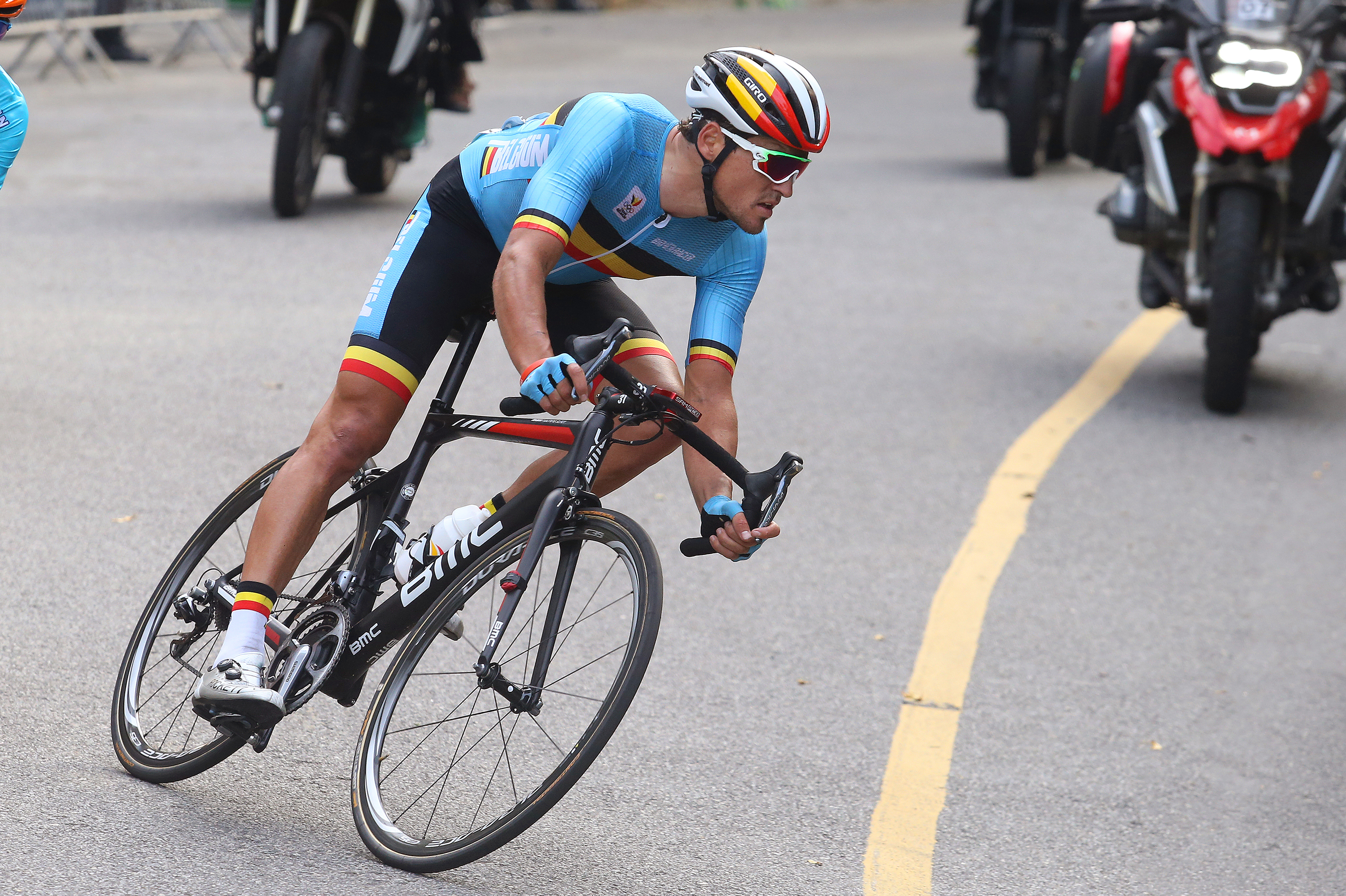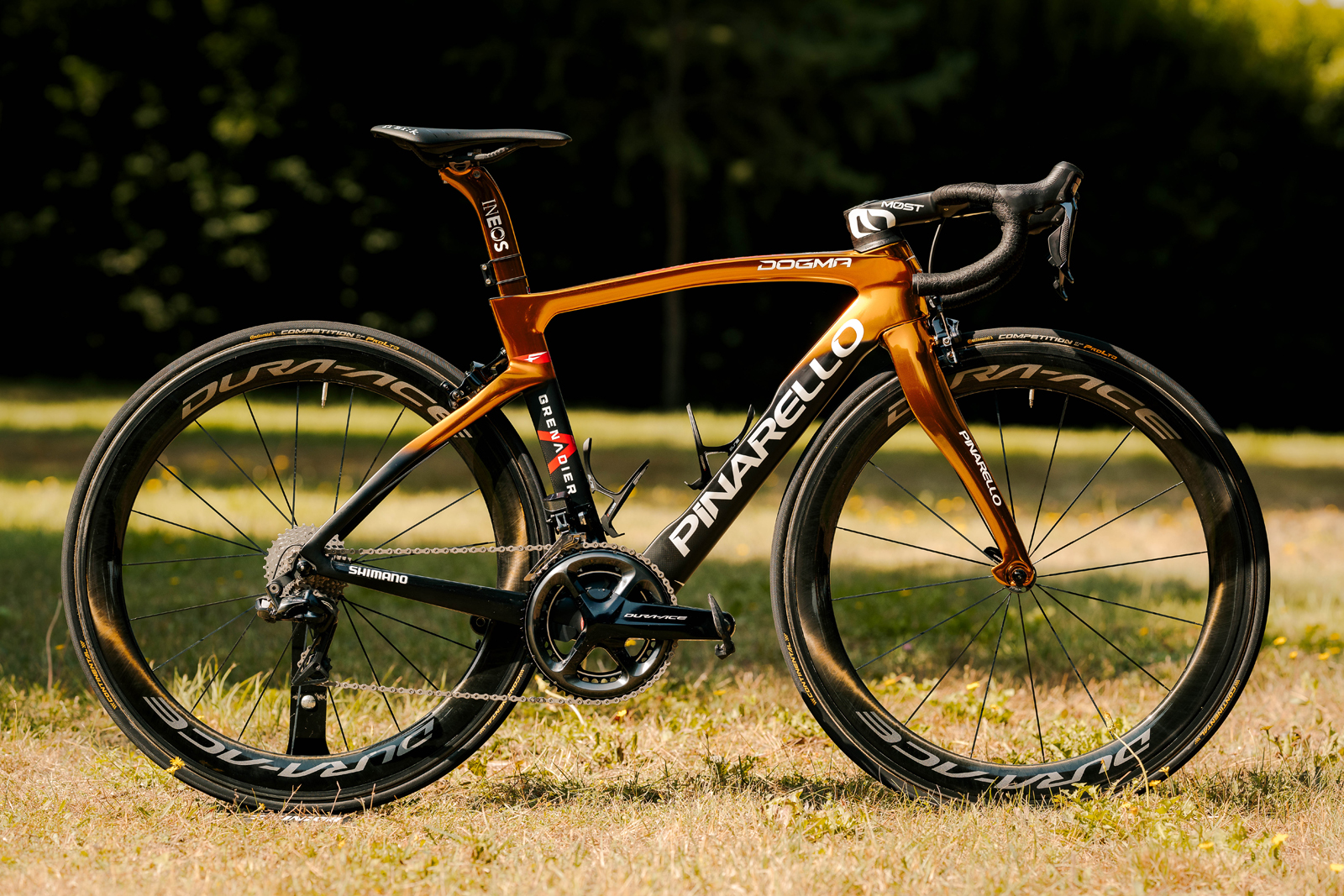
The Olympics Road Race truly is a race like no other. Not only are teammates suddenly rivals representing their home nations but also the teams vary in size depending on each country's qualification. Factor in the absence of race radios and the racing takes on a whole new dynamic different from any other race on the calendar.
With riders typically sticking to the bikes they know and riding the bike of their trade teams, it also means that teammates are often all riding different bikes, no doubt a nightmare for each nation's team of mechanics.
Over the years, we have seen bike design evolve at a rapid rate and with each Olympic Games four years apart, we often see monumental jumps in the bikes and the tech being used to claim gold.
The Beijing Olympics might only feel like yesterday, but at 16 years removed, the difference in bike tech between then and now is stark. With that in mind, we've taken a brief trip through history, starting in 2008, stopping off at London 2012, Rio 2016 and Tokyo 2021 en route to some predictions ahead of Paris this weekend.
Beijing 2008 - Samuel Sanchez’s Orbea Orca

Although the Orca name is still going strong, if we jump back 16 years the bike that claimed the gold medal in Beijing is a very distant relative of the new Orca. Just how much has changed is visually evident just by comparing the silhouette of Sanchez’s Orca with the current breed of modern aero race bikes.
Starting off with the frame, there is not a single internally routed cable on the bike. The exposed cables run along both the top tube and down tube. There is also not a single bit of electronics (excluding the bike computer) on this bike, with Shimano's electronic Di2 system still a year away from being released.
The wheels are also incredibly shallow Dura-Ace tubular models that in any modern race would be replaced with a deeper set of 40 or 50mm rims to increase aerodynamic efficiency.
Mounted to one of the spokes on the front wheel is also a small magnet for a speed sensor and Sanchez was using a traditional cycling computer with the widespread adoption of GPS-enabled head units still a few years away.
London 2012 - Alexander Vinokourov's Specialized S-Works Tarmac SL4


In 2012, Alexander Vinokourov was riding for Astana who at the time were sponsored by Specialized. As such Vinokourov took to the streets of London riding an all-red S-Works Tarmac SL4 that was certainly easy to pick out in the bunch.
Vinokourov’s win bought SRAM a gold medal in the road race with the newly released Red groupset, which used the brand's DoubleTap technology for shifting. This used a single shifter paddle to change both up and down the gears depending on how far you pushed the paddle.
Although DoubleTap does still exist, the brand has largely moved away from it on its road groupsets transitioning to wireless electronic actuation instead. Three years before the London Games, Shimano released its Di2 electronic shifting platform, however, SRAM-sponsored riders would have to wait until 2015 to get an equivalent with SRAM eTap.
Back in 2012 SRAM's Red mechanical groupset also made do with an 11-26 tooth 10-speed cassette, it might not have slowed Vinokourov down on Box Hill but by modern standards, this would be considered very small with riders now using wider ratio cassettes with the largest sprockets ranging from 30-36 teeth.
The Corima wheels fitted to the bike are also a step forward from the Dura-Ace wheels used by Sanchez four years prior. Corima’s Carbon Viva S front wheel was paired with a Carbon Aero+ MCC rear wheel. These deep-section tubular carbon rims offered an aerodynamic advantage over shallower wheels with the wheels also sporting a novel 12-spoke design.
Rio 2016 - Greg Van Avermaert’s BMC TeamMachine SLR01

2016 was the first Olympic games where an electronic groupset had been used to clinch the gold medal. There had been plenty of riders using Shimano’s Dura-Ace Di2 groupset in London, however, by 2016 the whole peloton was mostly using battery power to change gears.
Moving on from Vinkourov's winning bike, 2016 saw 11-speed reign supreme with Van Avermaert using an 11-28 tooth cassette paired to a 53/39 chainset. The move to a wider ratio cassette was partly due to the hillier profile of the Rio course but also indicated a sign of the times and things to come.
At the Rio Olympics, Van Avermaet decided to use Shimano’s Dura-Ace C35 wheels rather than the deeper C50 wheels. With the amount of climbing over the course of the race this decision was likely made to save some weight.
Mounted to the C35 rims were some wide-for-the-time 25mm Continental Competition Tubular tyres. By 2016 the peloton was waking up to the idea of wider tyres being better, but tubeless was still three years from its first foray into the peloton. With the technical descents on the course ultimately affecting the end result, having some wider rubber looks to have been a good call for Van Avermaet. During the race it looked as though Vincenzo Nibali was going to take the win, but a crash in the closing kilometres put an end to his bid for glory.
In an era where Specialized has already released the Venge Vias and Trek had launched the gen 5 Madone, it was interesting to see the relatively ‘un-aero optimised’ BMC TeamMachine making the top step of the podium. This goes some way to prove that although aero might be a key detail it still doesn’t make up for having the best legs on the day.
Tokyo 2020 - Richard Carapaz’s Pinarello Dogma F

The last time we found ourselves in an Olympic year was 2021 after the COVID-19 pandemic had caused a year's delay to standard Olympic cycle. On the hilly course around Tokyo, it was ultimately Ecuador’s Richard Carapaz who jumped away from his rivals taking the nation's first gold medal in the road race.
Ahead of the 2021 Tour de France, Pinarello had released the Dogma F, superseding the F12 that came before it. The most notable choice from Carapaz was to use the rim brake-equipped frame rather than the disc frameset that was also available. The decision behind this was likely to save weight with his trade team at the time, and Ineos Grenadiers were one of the last teams to make the switch to disc brakes.
The Shimano Dura-Ace R9150 Di2 groupset used by Carapaz was still an 11-speed version, however, when the groupset was launched it was the first time that the brand had released a Dura-Ace level cassette with an 11-30 tooth range. Fast forward a few years and 11-30 is now the smallest ratio cassette available from Shimano's 12-speed version of its top-tier groupset.
At the front of the bike, we find a one-piece carbon fibre bar and stem for the first time with fully internal cable routing (with the exception of the front brake). Previously Van Avermaert's BMC also had internal cable routing however there were more exposed cables at the front of the bike before they entered the frame rather than neatly being fed through the headset.
In 2021, tubeless tyres were growing in popularity, and had been used to clinch victory two years prior, but across vast swathes of the peloton, tubular tyres reigned supreme. In this case, it was the Lightweight Meilenstein Obermayer wheels fitted with Continental's Competition Pro Ltd tyres in a 25mm width.
This means that in 2024, given the ubiquity of disc brakes, we are going to see the first disc brake bike to take the top step, and it will most likely be running tubeless tyres.

What is likely to win in Paris
With the course relatively punchy before settling into a flatter final circuit in Paris it is likely that we are going to see aero bikes dominate proceedings. Pre-race favourite Mathieu Van der Poel will be riding the newly released Canyon Aeroad whilst his rival Wout Van Aert will most likely be on Cervélo’s S5 aero bike.
Other riders in contention such as Remco Evenepoel will be on the all-rounder bikes that they use for all road races with these becoming almost as aero as an outright aero-focused bike in recent years.
We are also likely to see most riders on 28mm tyres that are set up tubeless. Wider tyres have been adopted by almost all professional riders now and tubeless systems have been proven to offer better rolling resistance than tubular tyres.
It will also be the first Olympic Road Race where the winner is set to win on a bike equipped with disc brakes. It is easy to see just how far bikes have come since 2008, but with Olympic cycles only occurring every four years, it can take a while for new tech to claim gold.







